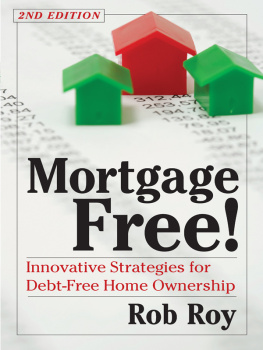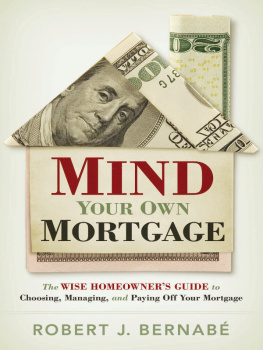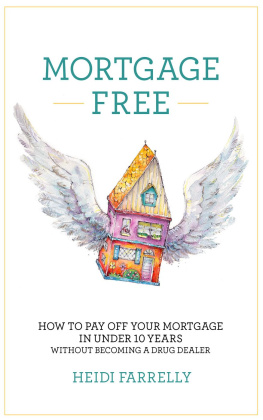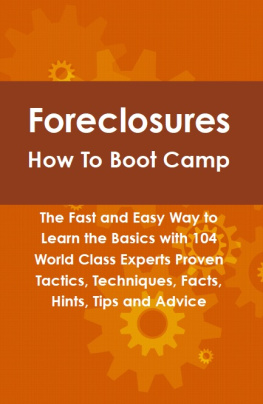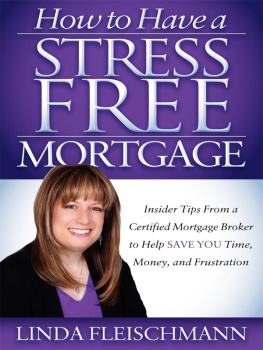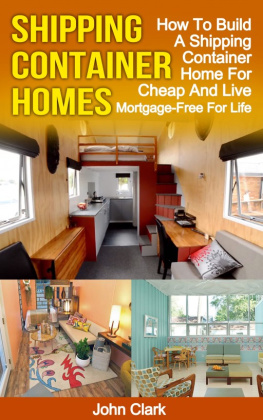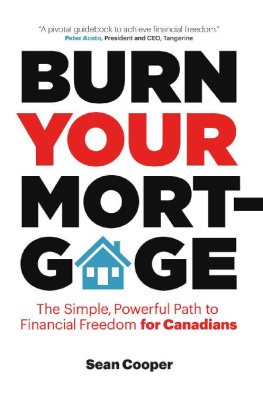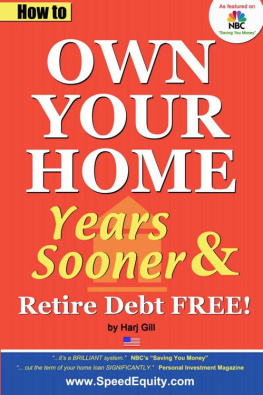
MORTGAGE FREE !
Innovative Strategies for Debt-Free Home Ownership
Revised Edition
ROB ROY
Chelsea Green Publishing
White River Junction, Vermont
Copyright 2008 by Rob Roy.All rights reserved. No part of this book may be transmitted or reproduced in any form by any means without permission in writing from the publisher.
Developmental Editor: Shay Totten Project Manager: Emily Foote Copy Editor: Margaret Pinette Proofreader: Susan Barnett Indexer: Peggy Holloway Book Designer: Peter Holm
Printed in the United States of America on recycled paper.
First printing, October 2008
10 9 8 7 6 5 4 3 2 1 08 09 10 11 12 13
Our Commitment to Green Publishing
Chelsea Green sees publishing as a tool for cultural change and ecological stewardship. We strive to align our book manufacturing practices with our editorial mission and to reduce the impact of our business enterprise in the environment. We print our books and catalogs on chlorine-free recycled paper, using soy-based inks whenever possible. This book may cost slightly more because we use recycled paper, and we hope youll agree that its worth it. Chelsea Green is a member of the Green Press Initiative (www.greenpressinitiative.org,) a nonprofit coalition of publishers, manufacturers, and authors working to protect the worlds endangered forests and conserve natural resources. Mortgage Free! was printed on 60-lb Joy White, a 30-percent postconsumer-waste recycled paper supplied by Thomson-Shore.
Library of Congress Cataloging-in-Publication Data
Roy, Robert L.
Mortgage free! : radical strategies for home ownership / Rob Roy. -- Rev. ed.
p. cm.
Includes bibliographical references.
ebook ISBN: 978-1-6035-8110-3
1. House construction--Popular works. 2. Dwellings--Energy conservation--Popular works.
3. Housing--Finance--Popular works. 4. Home ownership--Popular works. I. Title.
TH4815.R694 2008
643'.12--dc22
2008035550
Chelsea Green Publishing Company
Post Office Box 428
White River Junction, VT 05001
(802) 295-6300
www.chelseagreen.com
To Don and Mary Ann Osby, Ted Holdt and Sara Mapelli, Ki Light, Judith Meier, Rob and Bonnie Watt, Gregg and Janet Butz, Jim Schley and Rebecca Bailey and friends at Blue Moon, David ODonnell and Kathy Oppegard and all the other heroes who have generously shared of their experiences so that the way might be made a little smoother for those that follow. And to you, the reader. Good luck... and, when luck comes, take advantage of it!
Contents
Many of the strategies listed in Mortgage Free! have been recycled, polished, and updated from my earlier book, Money-Saving Strategies for the Owner/Builder (Sterling, 1981). Readers who have read several of my books have told me that Strategies was the one that helped them the most to reach financial security. I hope this total remake, which contains whole new chapters, strategies, and a variety of new present-day case studies from all over North America, will be even more useful. I wish to thank Charles Nurnberg, Executive Vice President of Sterling Publishing Company, for his kind permission to reprint much of the earlier material in this new work.
Thanks also to the gang at Chelsea Green for providing encouragement, research materials, and the occasional gentle kick in the pants. Thanks to assistant editor Rachael Cohen for valuable suggestions and to manuscript reader and critic extraordinaire Michael Potts for straightening me out when I needed it. Thanks to Publisher Stephen Morris for his humorous but true story of how he and his wife became mortgage-free early in their marriage. Special thanks to Editor-in-Chief Jim Schley, not only for his own contribution to chapter 7 but also for his personal attention in supervising the editing of the entire manuscript. And extra special thanks to project editor Alan Berolzheimer, who read my manuscript and wrestled with it so many times that it started to make sense and then suggested how it could be improved so that other readers could make sense of it in a single reading. Last, but not least, the Gold Pen award goes to fellow undergrounder Malcolm Wells for all the great drawings throughout the book. They help to lighten the poor readers load when the author starts taking himself too seriously. Muchasgracias, Mac.
Acknowledgments: Revised Edition
Thanks to Chelsea Green Publisher Margo Baldwin for suggesting this revision, Editor Shay Totten for providing old files, getting me going on the project, and editing the revisions, Project Manager Emily Foote, Associate Editor Jonathan Teller-Elsberg, Copy Editor Margaret Pinette, Proofreader Susan Barnett, and Book Designer Peter Holm.
When people tell me this book is radical or outrageous, I thank them, for then I know that it has found its place among good company. When they tell me the book is simplistic or that the strategies are unworkable, I smile, because I know theyre wrong. Theyre wrong because Ive proven to myself and to others that the strategies for mortgage freedom work. And theyre wrong because thousands of othersnot fat catshave lived in their own homes without ever having signed a mortgage agreement. The several case studies detailed in this book are but a tiny tip of a gigantic iceberg.
For many North Americans, the words mortgage-free home take on a dreamy quality and suggest the completion of a twenty-five- or thirty-year economic trial or, perhaps, winning the state lottery. However, among the very rich, and, paradoxically, many of the rural poor (as we will see in ), the mortgage-free home is the status quo. Only the vast middle class seems to suffer from the weight of mortgage manacles.
Housing costs, whether by way of rent or mortgage, are the single largest after-tax expenditure for most Americans. It neednt be that way. Housing costs can be drastically reduced. Rental housing should be considered as a short-term necessity only in situations, for example, where an individual, couple, or family has just moved to a new area and has not yet found ownership possibilities. Long-term, even a mortgage is better than rent, which returns no equity. Renting a house or apartment is like hiring a car. When the ride is over, the car (or rental unit) is returned to its true owner.
A mortgage is like hiring money, particularly in the first years when most of the payments go toward interest. In the early years, little equity is built up. If you get no further in this book than this, the fourth paragraph, take one investment strategy away with you, and you will be better off. It is this: Whenever you have extra money to investfrom tax refund, hard work, gift, windfall, whatevermake a principal payment on your mortgage. Many economists will tell you that acceleration of mortgage principal payments is one of the best investments you can make. Even a $50 prepayment early in the mortgage might save you a couple of $400 payments at the end. Steve Carlson, author of The Best Home For Less (Avon, 1989), asks, Where else can you get a return of $800 on a $50 investment?
And theres more. The average American family spends just five to seven years living in the same home before moving. In the first five to seven years of a mortgage amortization schedule, about 80 percent of the money paid in goes to interest. Not much equity has built up. Then they start all over again in a new house with a new mortgage. For them, the chances of ever being mortgage free are slim to nil.
THE VAGARIES OF AMORTIZATION SCHEDULES
The chart below is part of an actual amortization schedule used in a property transaction with which I was acquainted. I have abbreviated the long schedule to make certain points. The amount of the mortgage is $36,500, the rate is 10 percent, and the number of monthly payments is 300 (25 years). Each payment is $331.68, but the breakdown of that payment between principal and interest changes dramatically as the years proceed. Note how almost all of the early payments go toward interest.
Next page
